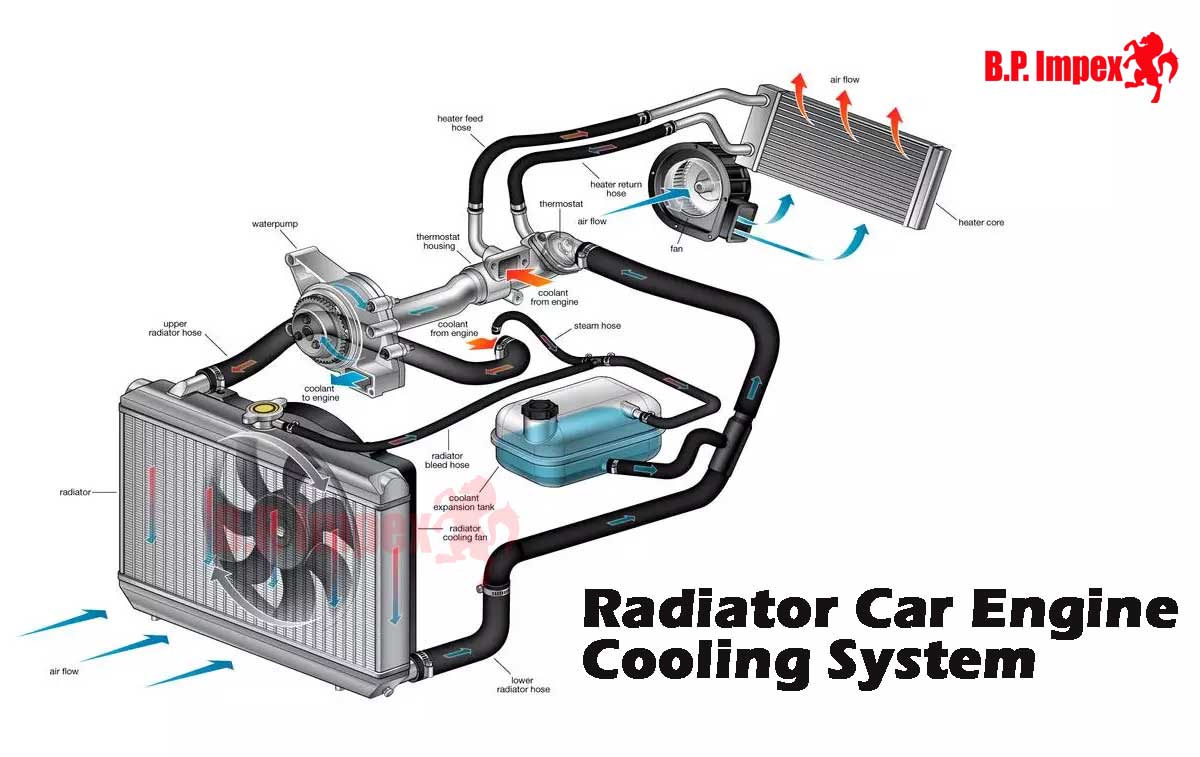The car engine operates at high temperatures, and without an effective cooling system, it would overheat and fail. The radiator is a crucial component of this system, ensuring that the engine runs smoothly and efficiently. In this article, we’ll delve into the importance of the radiator and its role in the engine cooling system, as well as discuss other key spare parts involved in the cooling process.
1. Understanding the Car Cooling System
The car cooling system is designed to regulate the engine’s temperature, preventing it from overheating and maintaining optimal performance. It involves several components working together to dissipate heat generated by the engine. The radiator is the centerpiece of this system, but it works in conjunction with other parts like the water pump, thermostat, coolant, and hoses.
2. Role of the Radiator in Engine Cooling
The radiator’s primary function is to dissipate heat from the engine coolant. The coolant absorbs heat from the engine and flows into the radiator, where it is cooled by air passing through the radiator fins. The cooled coolant then recirculates back into the engine, maintaining a stable temperature.
3. Key Engine Spare Parts Involved in Cooling
- Radiator
- The radiator is a heat exchanger made up of thin metal fins. It is located at the front of the car, allowing air to flow through it as the vehicle moves. The radiator is essential for cooling the heated coolant from the engine.
- Water Pump
- The water pump circulates the coolant throughout the engine and radiator. It ensures a continuous flow of coolant, which is vital for maintaining the engine’s temperature.
- Thermostat
- The thermostat regulates the flow of coolant to the radiator. It remains closed when the engine is cold, allowing the engine to warm up quickly. Once the engine reaches its optimal temperature, the thermostat opens, permitting coolant flow to the radiator.
- Coolant
- Coolant, or antifreeze, is a liquid mixture that absorbs heat from the engine. It has a higher boiling point and lower freezing point than water, making it ideal for maintaining engine temperature in various conditions.
- Hoses
- Hoses are flexible tubes that connect the radiator, water pump, thermostat, and engine. They transport the coolant between these components, ensuring the cooling system operates efficiently.
4. Symptoms of a Failing Radiator
- Overheating Engine: If the radiator is not functioning correctly, the engine may overheat, causing severe damage.
- Coolant Leaks: Visible coolant leaks under the car can indicate a damaged radiator.
- Low Coolant Levels: Consistently low coolant levels may signal a radiator problem.
- Rusty or Discolored Coolant: Contaminated coolant can clog the radiator, reducing its effectiveness.
- Steam from the Engine: Steam coming from the engine compartment is a clear sign of an overheating issue, possibly due to a failing radiator.
5. Maintenance Tips for a Healthy Radiator
- Regular Coolant Checks: Ensure coolant levels are adequate and top up as needed.
- Coolant Flush: Perform a coolant flush every 30,000 miles or as recommended by the manufacturer.
- Inspect Hoses: Check hoses for any signs of wear, cracks, or leaks and replace them if necessary.
- Clean Radiator Fins: Keep the radiator fins clean and free of debris to ensure proper airflow.
- Monitor Engine Temperature: Pay attention to the engine temperature gauge and address any overheating issues promptly.
Conclusion
The radiator is a vital component of the car engine cooling system, playing a crucial role in preventing overheating and ensuring the engine runs efficiently. Understanding the importance of the radiator and maintaining it properly can help extend the life of your engine and keep your car performing at its best. Regular checks and maintenance of the radiator and other cooling system components are essential for a smooth and trouble-free driving experience.







Leave a Reply